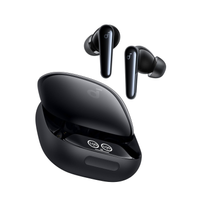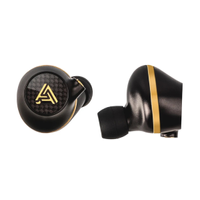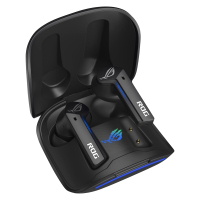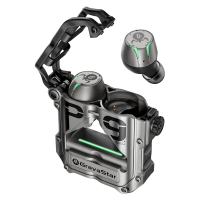The best wireless gaming earbuds in 2025: These are the buds I'd allow to whisper sweet nothings into my ears
So you finally managed to bag a Steam Deck or ROG Ally, now what are the best gaming earbuds to go with it?
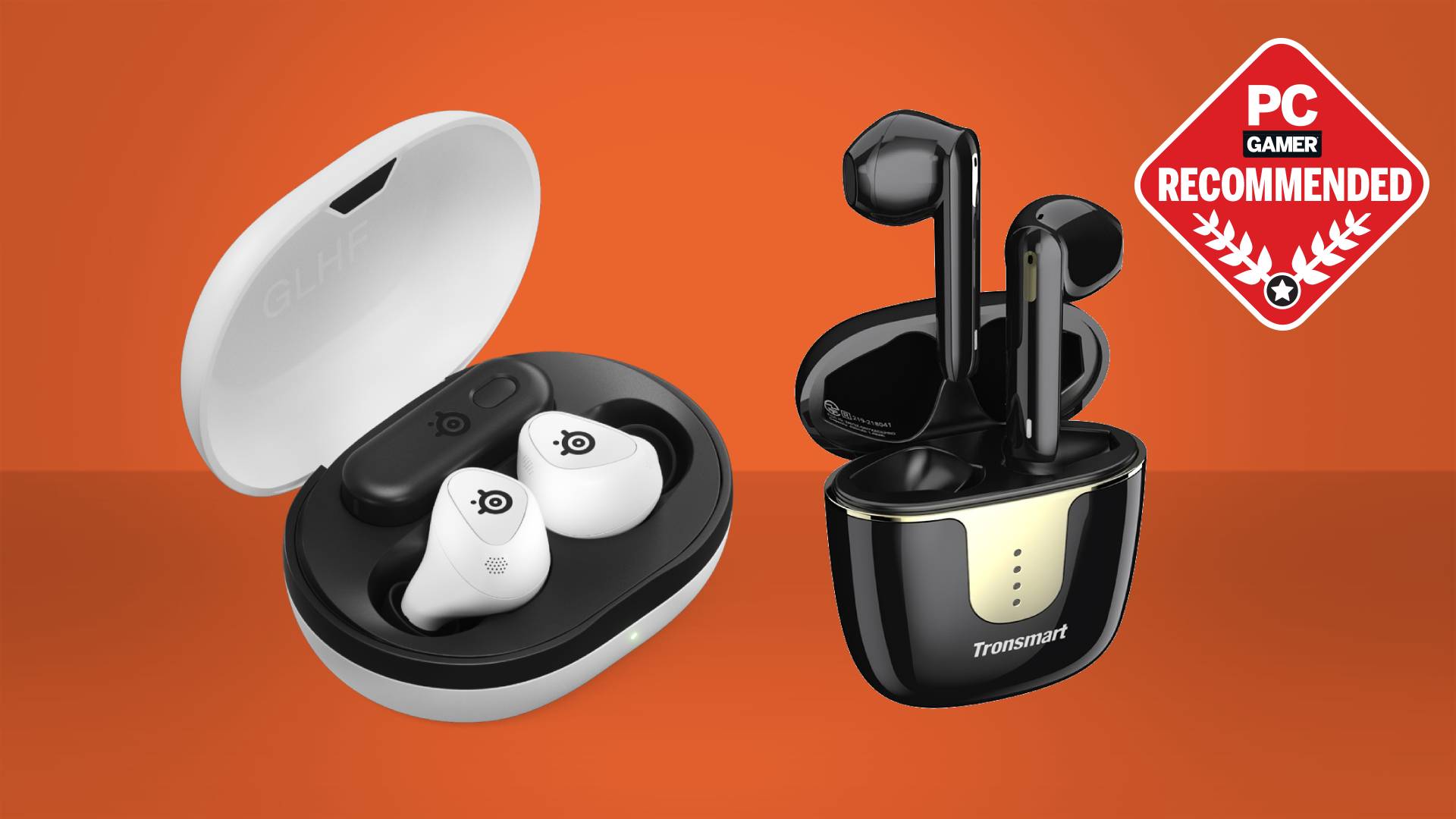
The best gaming earbuds aren't just for use while sitting in front of your PC—they're a favoured choice for the active gamer. Whether jogging, commuting to work or playing hours of Vampire Survivors on your Steam Deck, gaming earbuds give you the convenience and freedom you don't usually get from your typical bulky wireless gaming headset.
The SteelSeries Arctis GameBuds are the best overall wireless gaming earbuds, offering incredible versatility and stunning audio quality. They're not cheap, though. If you want cheap, the best budget wireless gaming earbuds are the Tronsmart Onyx Ace Pro earbuds, which offer pretty reasonable sound quality and great battery life.
Obviously, for the best aural experience, nothing beats a traditional over-ear gaming headset, especially when you're in the comfort of your home or office. However, if you are out and about, it's nice to have a single pair of discreet earbuds that are small enough to fit into a pocket and can easily connect to your phone or laptop.

As a keen handheld gaming PC user, Dave has been experimenting with all sorts of earbuds to get his portable gaming setup on flick, as the kids probably said once upon a time. Dave is also a keen enjoyer of music, high-end headphones, and audiophile gear, and has experience with all audio tech going back to the early days of TechRadar.
June 04, 2025: We checked over all our recommendations, expanded out the review copy for the SteelSeries Arctis Gamebuds, and also expanded our testing methodology section. We test every set of earbuds we receive as thoroughly as possible to make sure you get the best advice as to which buds are brilliant, and which should be binned.
April 29, 2025: Added the EarFun Air Pro 4 as our pick for the best mid-range earbuds because for its frequently discounted price it offers a ton of features and stellar sound quality. We also added the Soundcore Liberty 4 Pro to the Also Tested section. While we rated these earbuds very highly, they don't quite pip the SteelSeries ones which offer 2.4 GHz connectivity and some gaming-focused features that the Soundcore buds lack.
January 28, 2025: Removed the Audeze Euclid earbuds from our list and put them in the Also Tested section as these are now discontinued. We also added the Creative Outlier Pro earbuds to the list thanks to their stellar battery life.
The Quick List
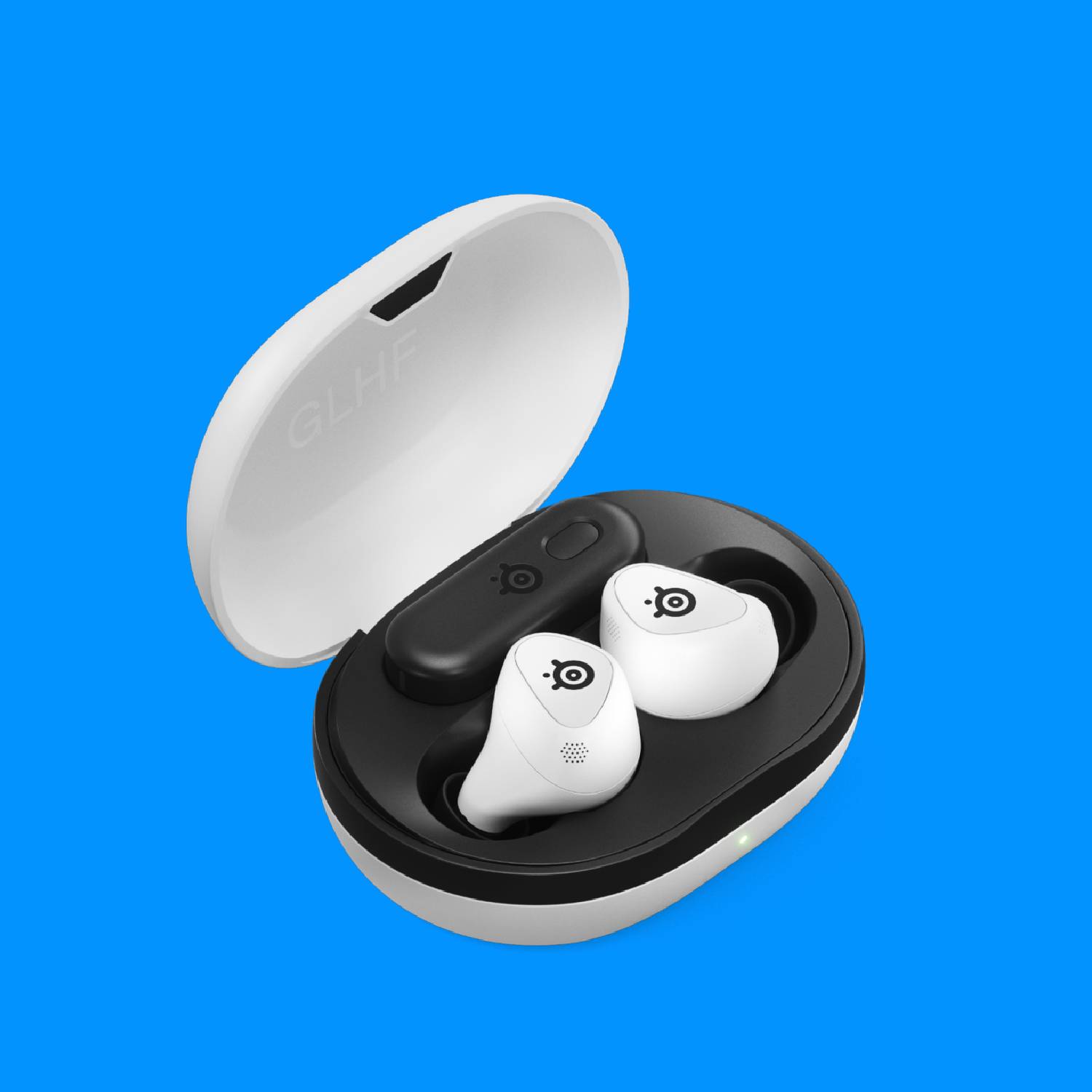
The best overall
The SteelSeries Arctis GameBuds are the best all-round wireless earphones, offering a ton of features such as ANC and a toggleable 2.4 GHz/Bluetooth connection, as well as seriously stellar audio quality.
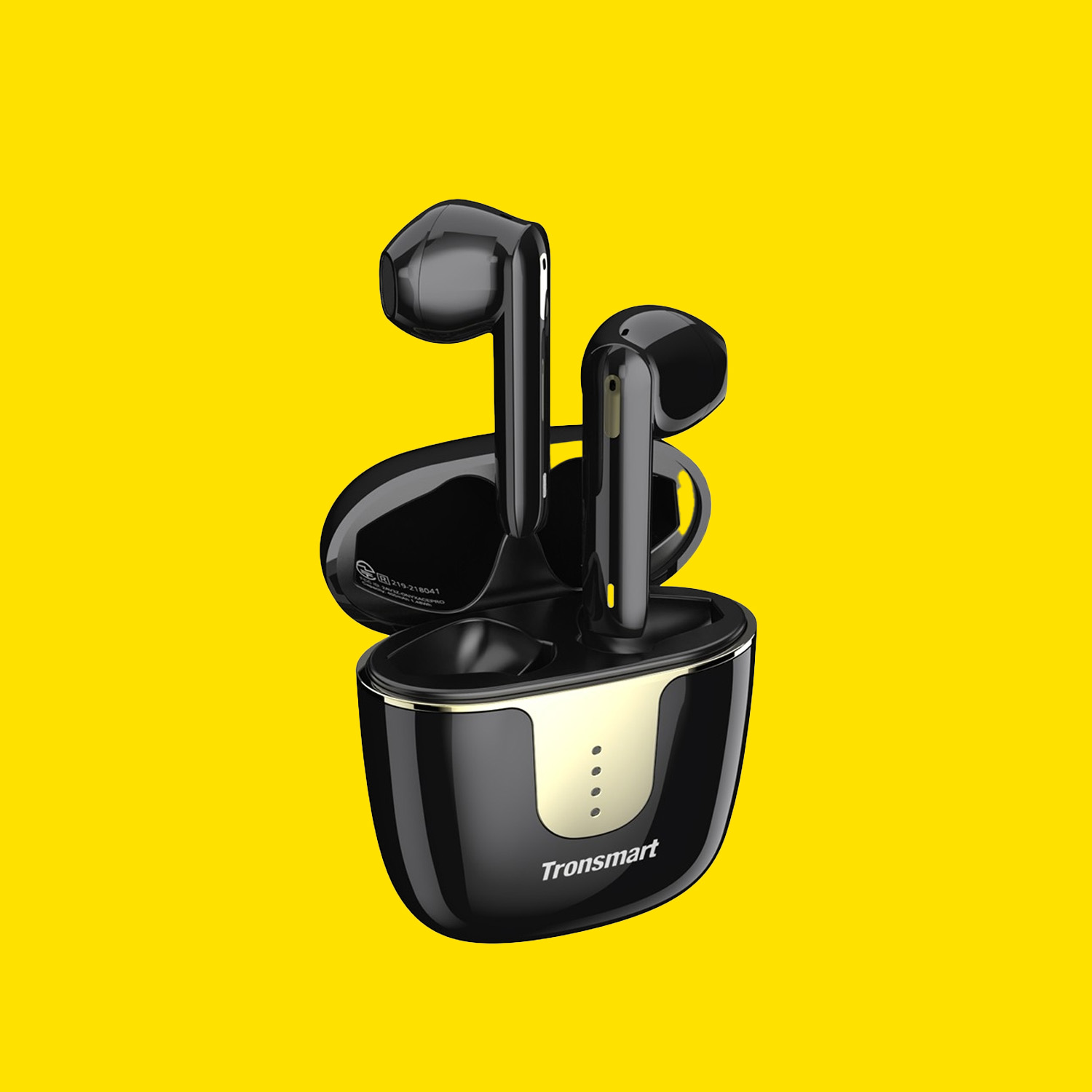
The best budget
In a world where everything seems to cost lots and lots of money, the Onyx Ace Pro's reasonable pricing is a breath of fresh air. The battery life is also surprisingly strong for the cash.

The best mid-range
These seemingly high-end earbuds are so consistently on sale that they might as well be considered mid-range, and you're getting some wonderfully crisp audio and a massive feature set for the cash.
⬇️ Click to load more of the best gaming mics ⬇️
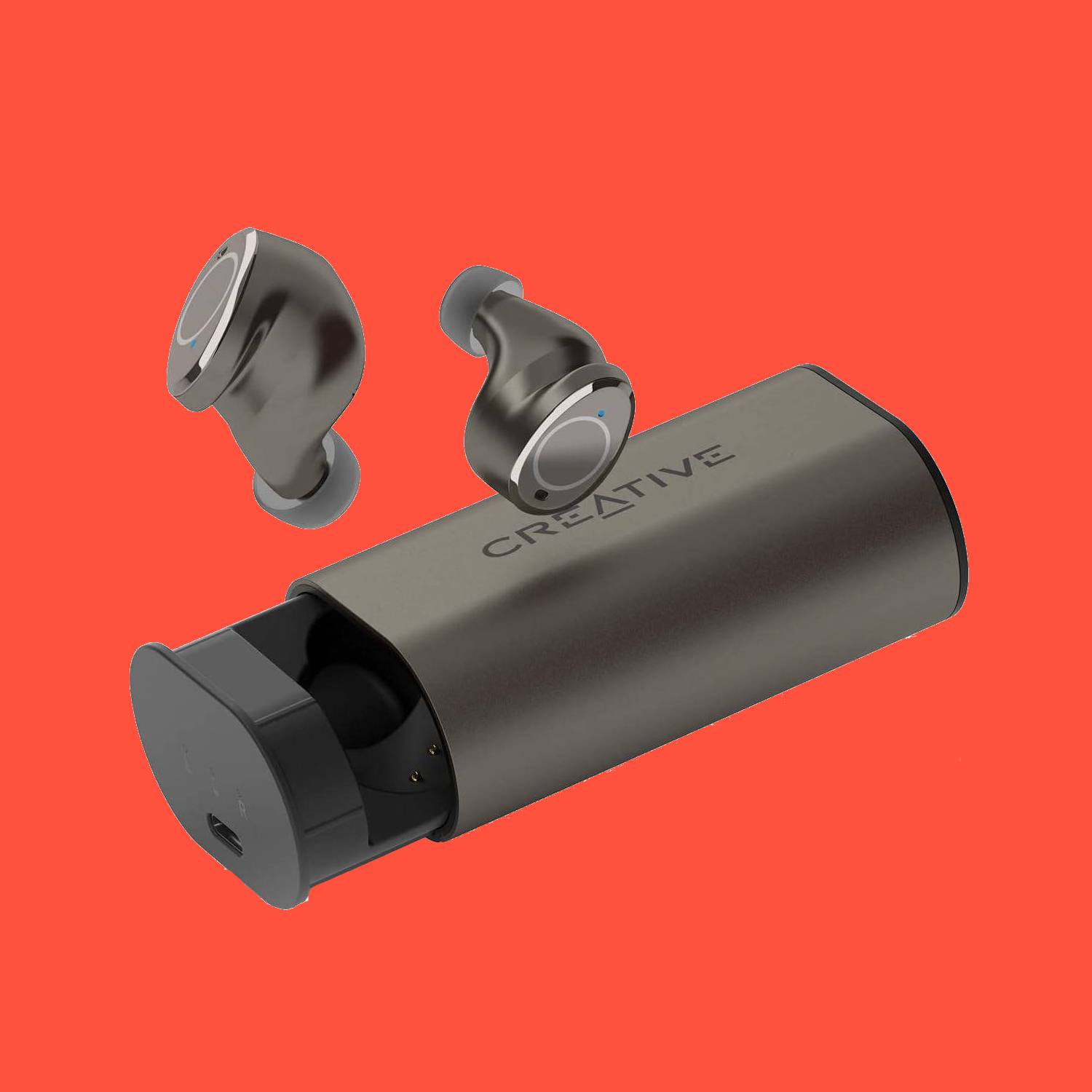
The best battery life
In addition to sounding pretty fantastic, these earbuds pack in a pretty wonderful 15 hours of battery life, or 60 if you include the charging case.
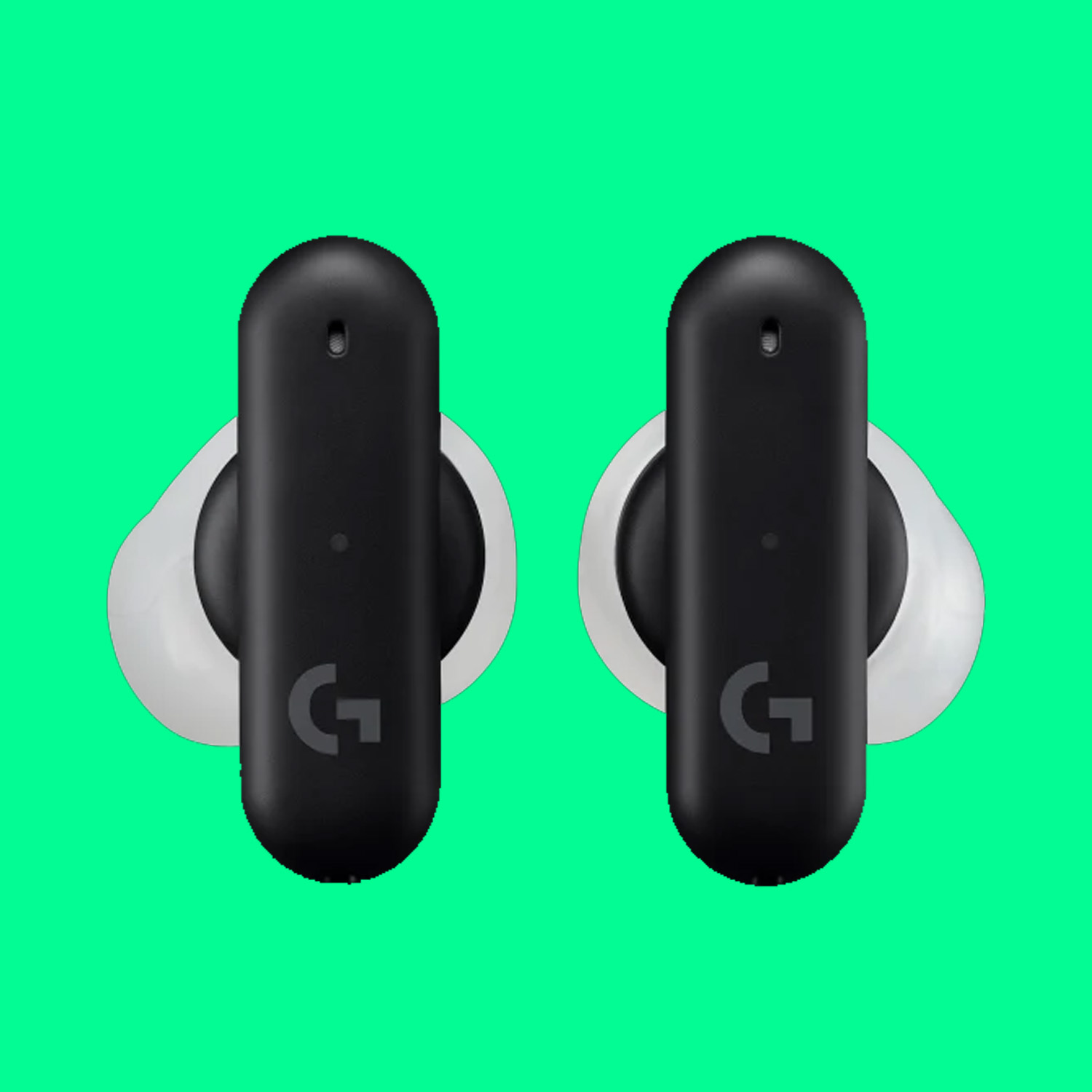
The best dual-mode
Both mobile and desktop buds rolled into one. These G FITS earbuds have an odd name but they look sleek and sound great, too.
Best overall wireless gaming earbuds

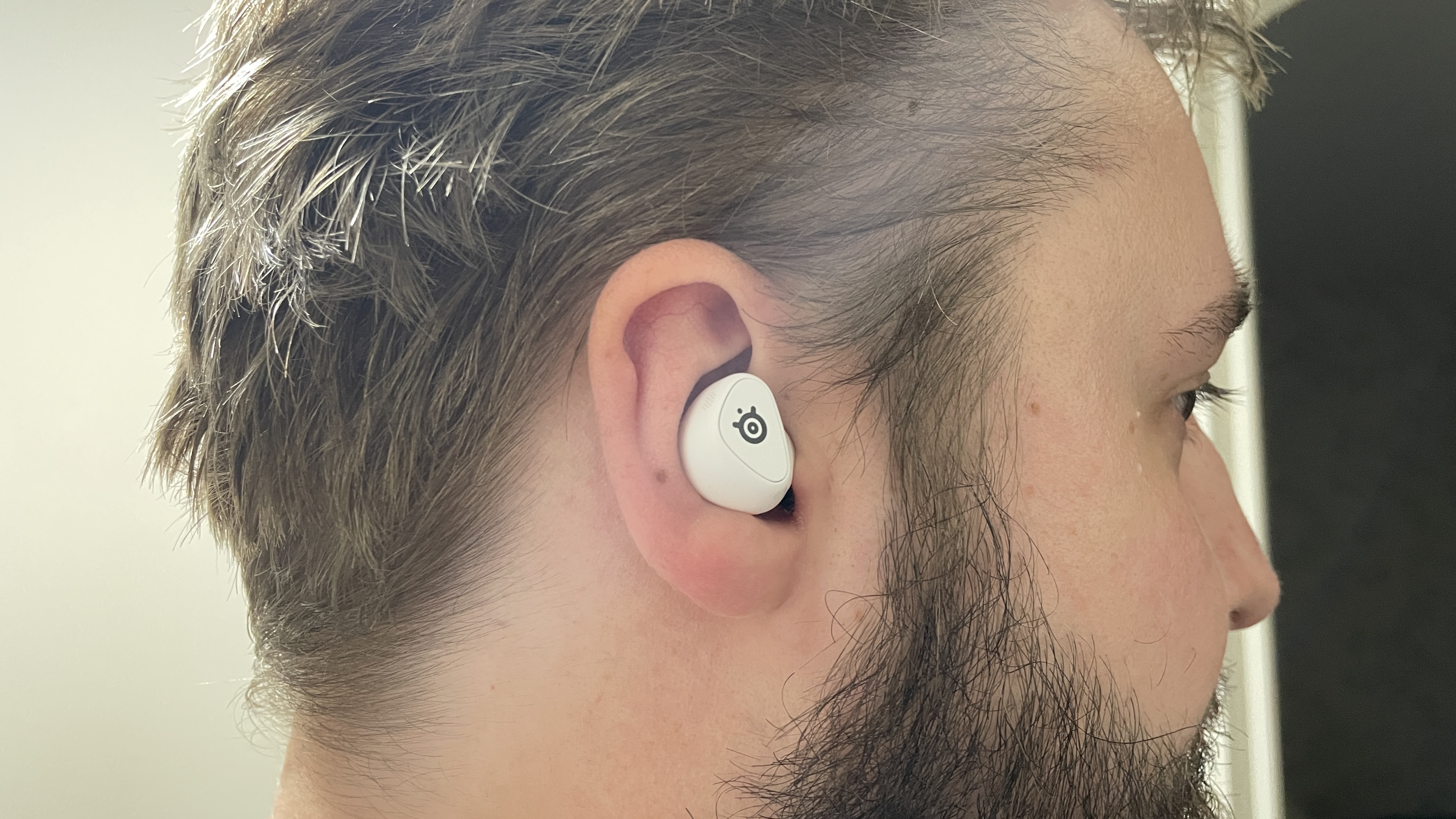
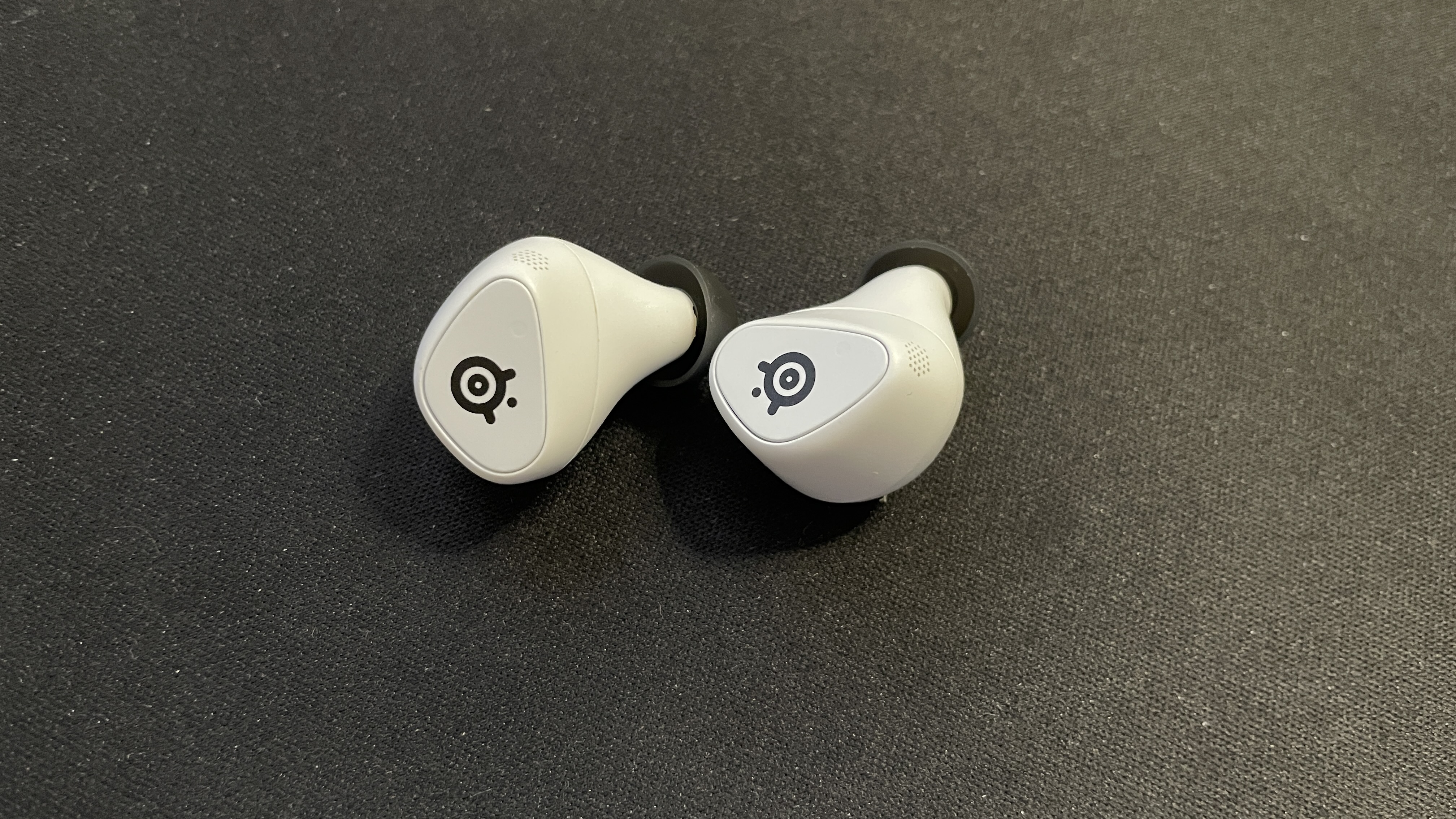
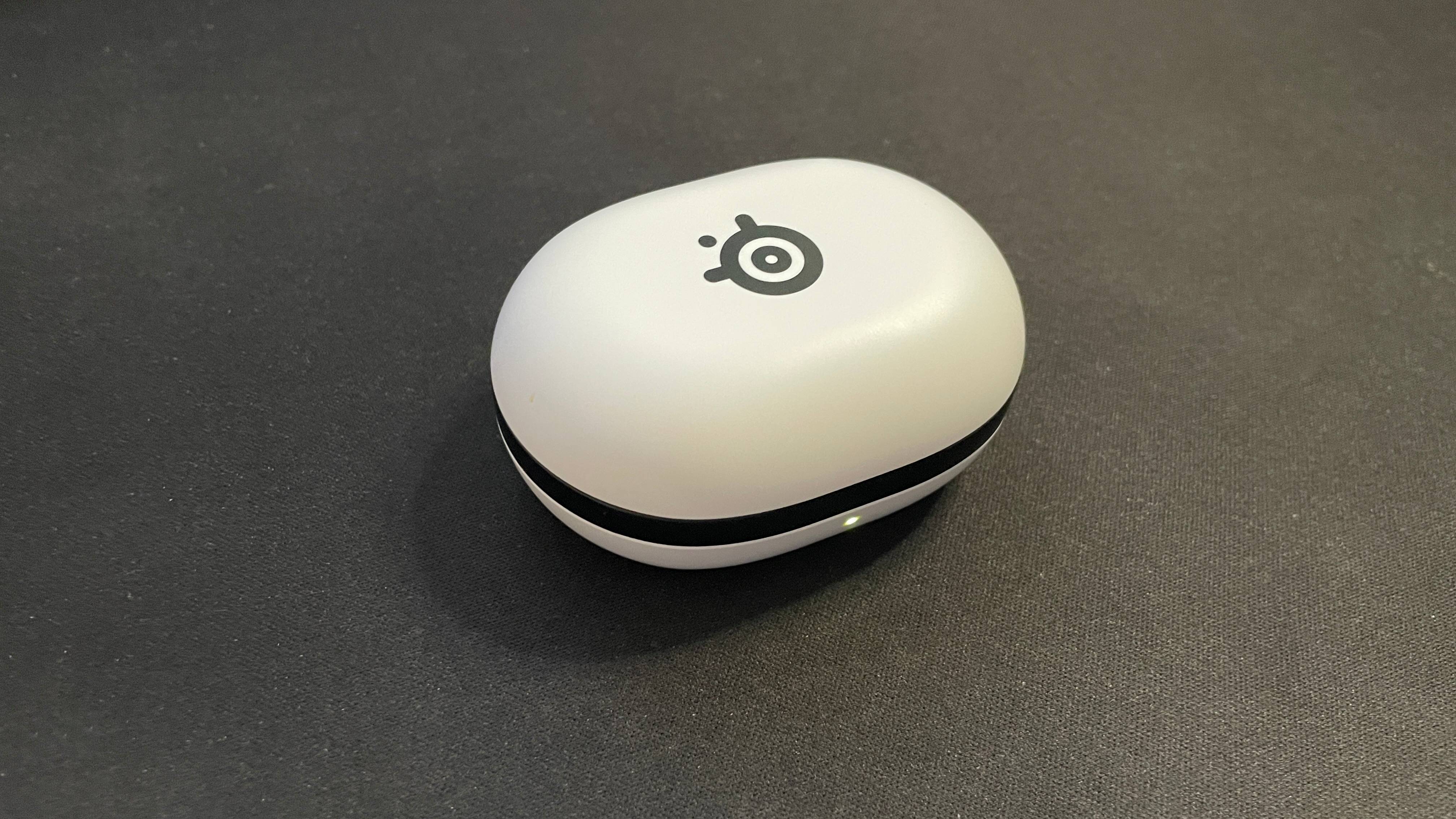
Specifications
Reasons to buy
Reasons to avoid
✅ You want high-quality audio: The Arctis GameBuds come close to over-ear audio quality, especially if tuned right.
✅ You use earbuds for many different things: The GameBuds are incredibly versatile thanks to ANC, Transparency mode, and quick-switching between Bluetooth and 2.4 GHz.
❌ You're on a budget: While they're certainly worth the price if you're looking for a premium pair of earphones, they're also undoubtedly expensive. Look a little further down for some more reasonably-priced options if money is tight.
❌ You need to connect to multiple Bluetooth devices: The GameBuds can only connect to one Bluetooth device at a time. Simple as that, really.
The SteelSeries Arctis GameBuds are far and away the best wireless earbuds for gaming. They're feature-packed, versatile, and most importantly, they sound incredible. You're paying a premium, but honestly, for the sheer amount you're getting for the cash, it's not that much of one.
On the feature front, we're talking active noise cancelling (ANC), transparency mode, easy 2.4 GHz or Bluetooth toggling, simple on-ear button control, 40 hours of battery life with the charging case, wireless charging, and a plethora of game-specific audio profiles to choose from in the phone or desktop app.
In other words, while these are great for gaming, they're not just for blasting around in your shooters and your wizzbangs and your arr pee gees.
They're also great for toggling to Bluetooth to answer a phone call, or listening to Spotify. The noise cancelling is excellent, and the touch transparency mode is perfect for dipping in and out of the world around you as you travel.
Yes, the real world will inevitable intervene when you're out on the move. The SteelSeries buds have you covered, and make for great travelling companions in pretty much every way.
In addition to all this, though, you're getting some seriously top-notch audio quality, especially when the EQ profile's tailored to the game or music that you're playing. The 6 mm, 20–20,000 Hz drivers might be small, but they pack a punch that almost matches some entry-level open-backed audiophile cans.
Not quite, of course—it'd be difficult for any earbuds to do that—but it's close. They're capable of pumping out a surprising amount of bass, too, if you want them to.
Package all of this in earbuds that look great, in a charging case that also looks rather dashing, feels premium, and can charge on a Qi stand, and you have a winner. They're the best wireless earbuds for gaming in pretty much every way—and most other uses, too.
Read our full SteelSeries Arctis GameBuds review.
Best budget wireless gaming earbuds
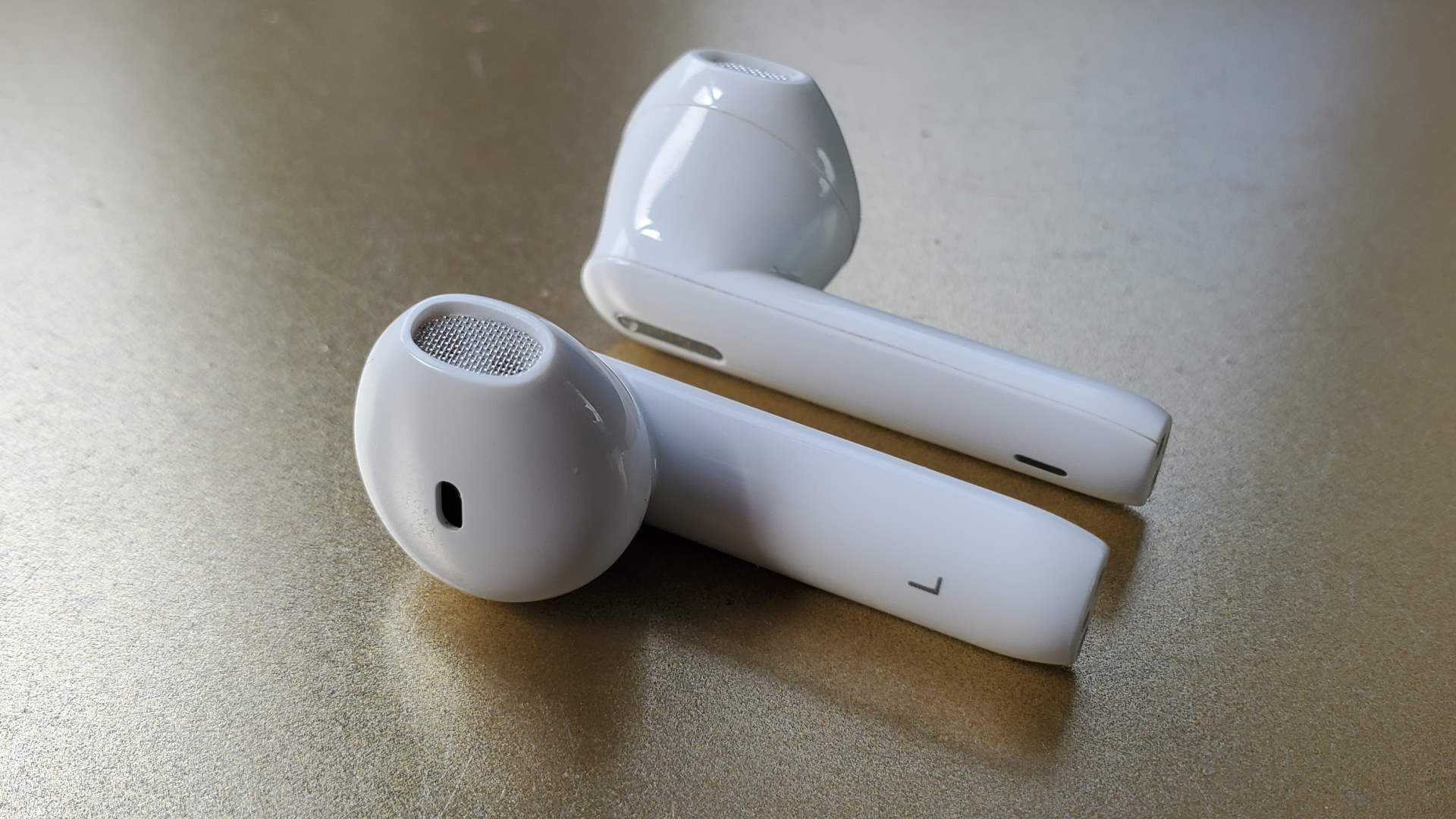

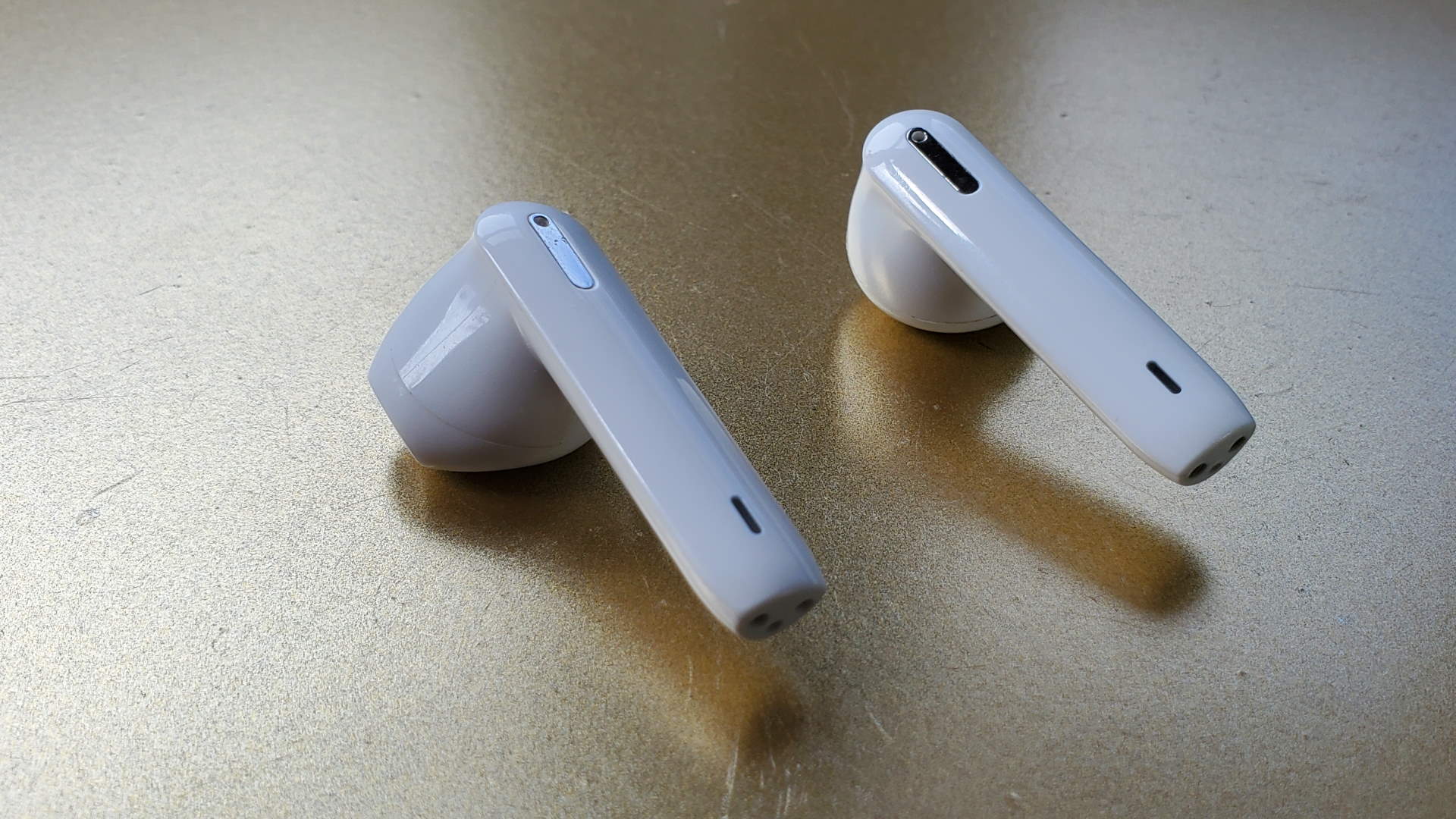

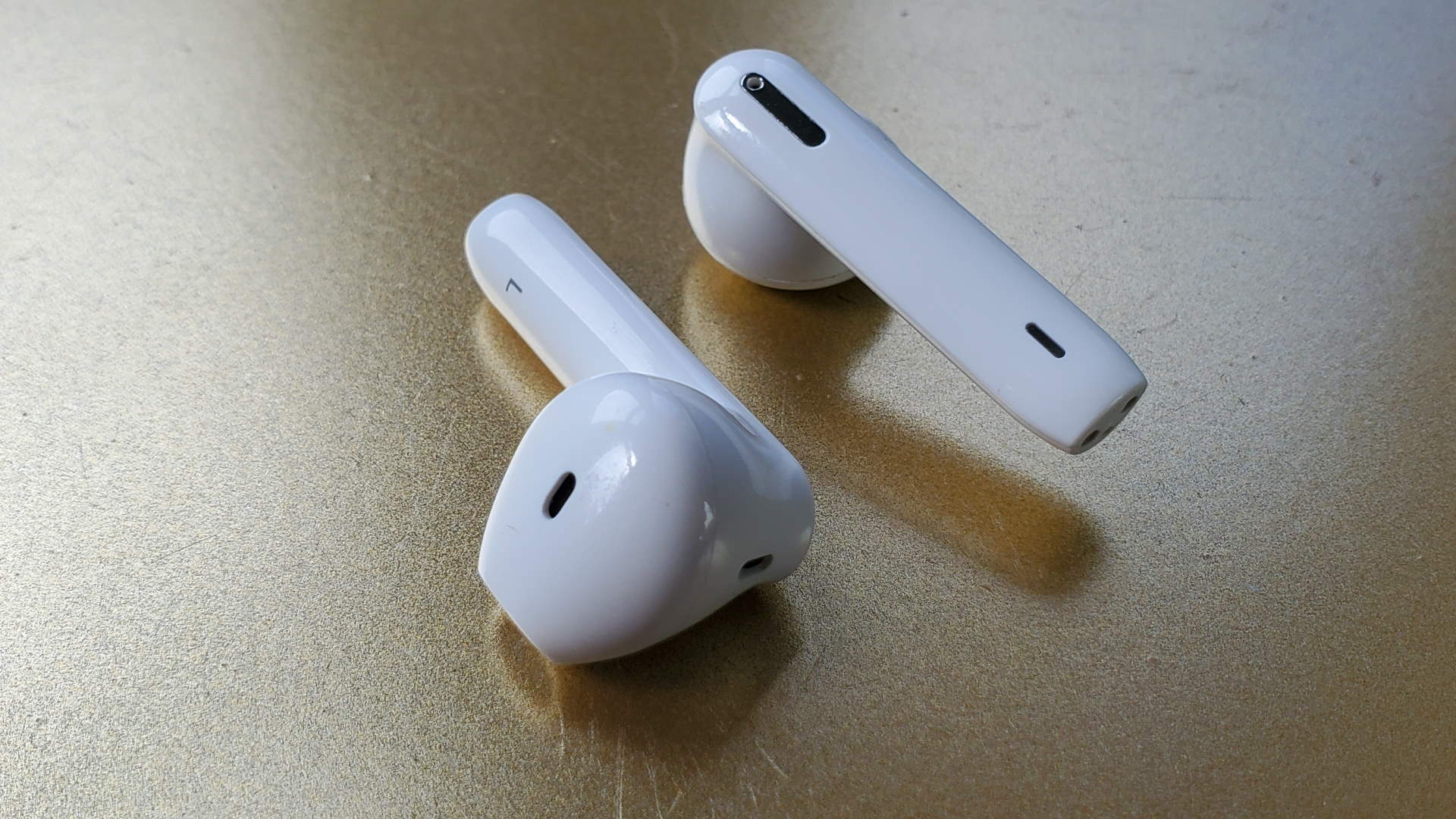
Specifications
Reasons to buy
Reasons to avoid
✅ You're on a tight budget: The Onyx Ace Pro earbuds are very affordable, provided you get that all-important AliExpress discount.
❌ You don't want to annoy friends: The poor noise isolation means everyone will hear everything your gaming device is doing.
When it comes to sheer value for money, the best budget wireless gaming earbuds are the Tronsmart Onyx Ace Pro. You're getting some great features at a very affordable price, though you do have to put up with some sacrifices to reach this price point.
To start with, while the audio is good in general, it's not exactly spectacular. That said, it really only lacks direct oomph in the low end. I don't love an overly bass-heavy tuning anyway, but the Onyx Ace Pro buds do still feel lightweight on that front. The highs and mids are crisp, however, and the audio is nicely detailed despite that slight bass tone failing.
Something else that isn't great is sound isolation. These things are leaky as a colander that's been sieving shotgun pellets directly from the muzzle. You can hear everything. If you're concerned about being oblivious to traffic when you're crossing the road, fine, but if you want to use the Onyx Ace Pro buds to game on the go you're going to suffer.
That's a problem because most of the situations where I want to be using a set of wireless earbuds for gaming will find me on some sort of transport or in a public place. And generally not sitting in a quiet room with a level of noise that isn't going to aurally intrude upon my playtime.
On the other hand, the game mode is plenty responsive, the battery life is good, the Bluetooth connection is solid. And while the audio isn't the greatest, it's perfectly serviceable. Just not as punchy as the (more expensive) competition.
So, if you're just after a budget set of AirPod-a-likes for your Steam Deck, the Tronsmart Onyx Ace Pro make for a solid purchase. So long as you pick them up for the right price, that is.
Read our full Tronsmart Onyx Ace Pro review.
Best mid-range wireless gaming earbuds
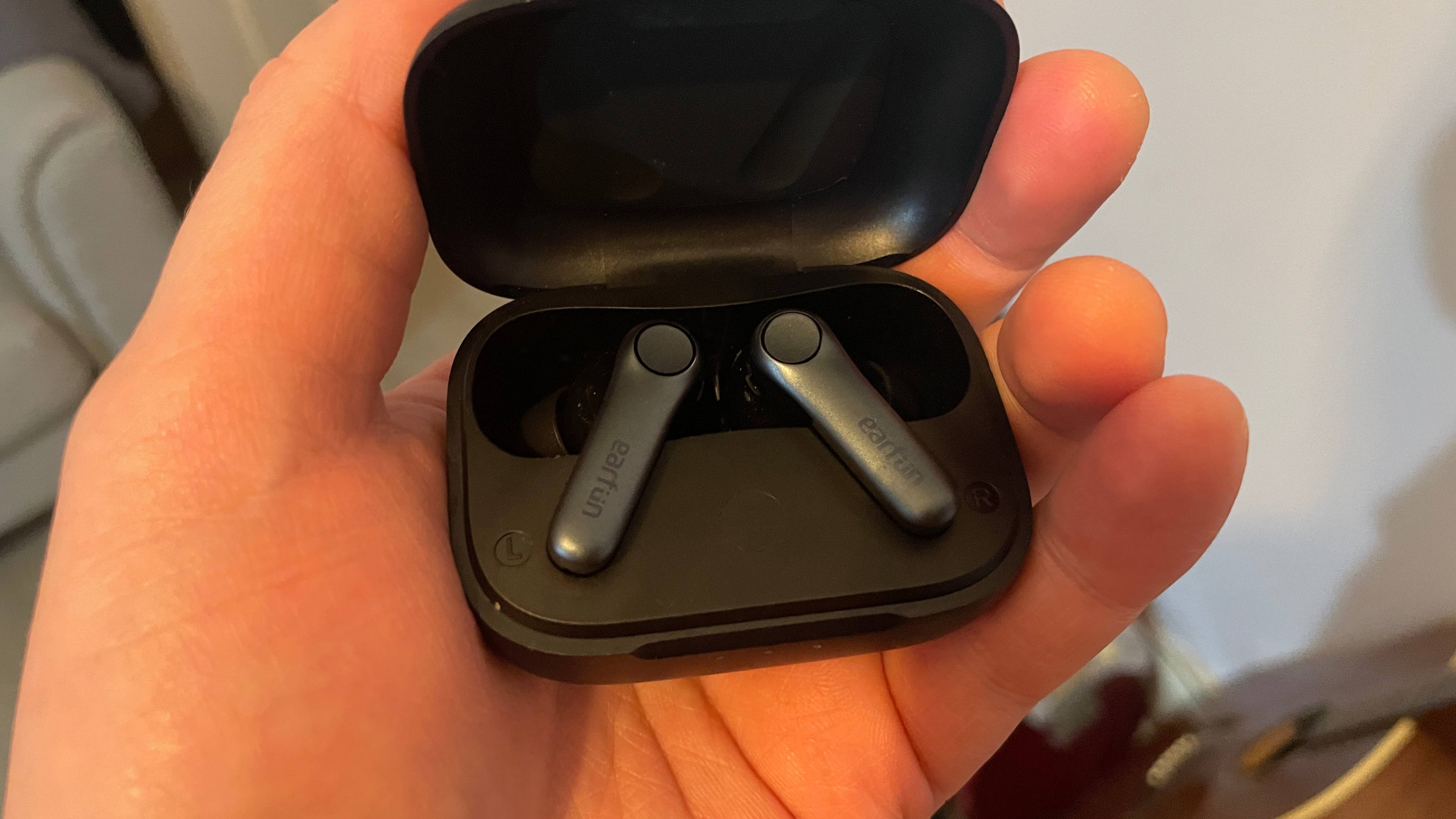
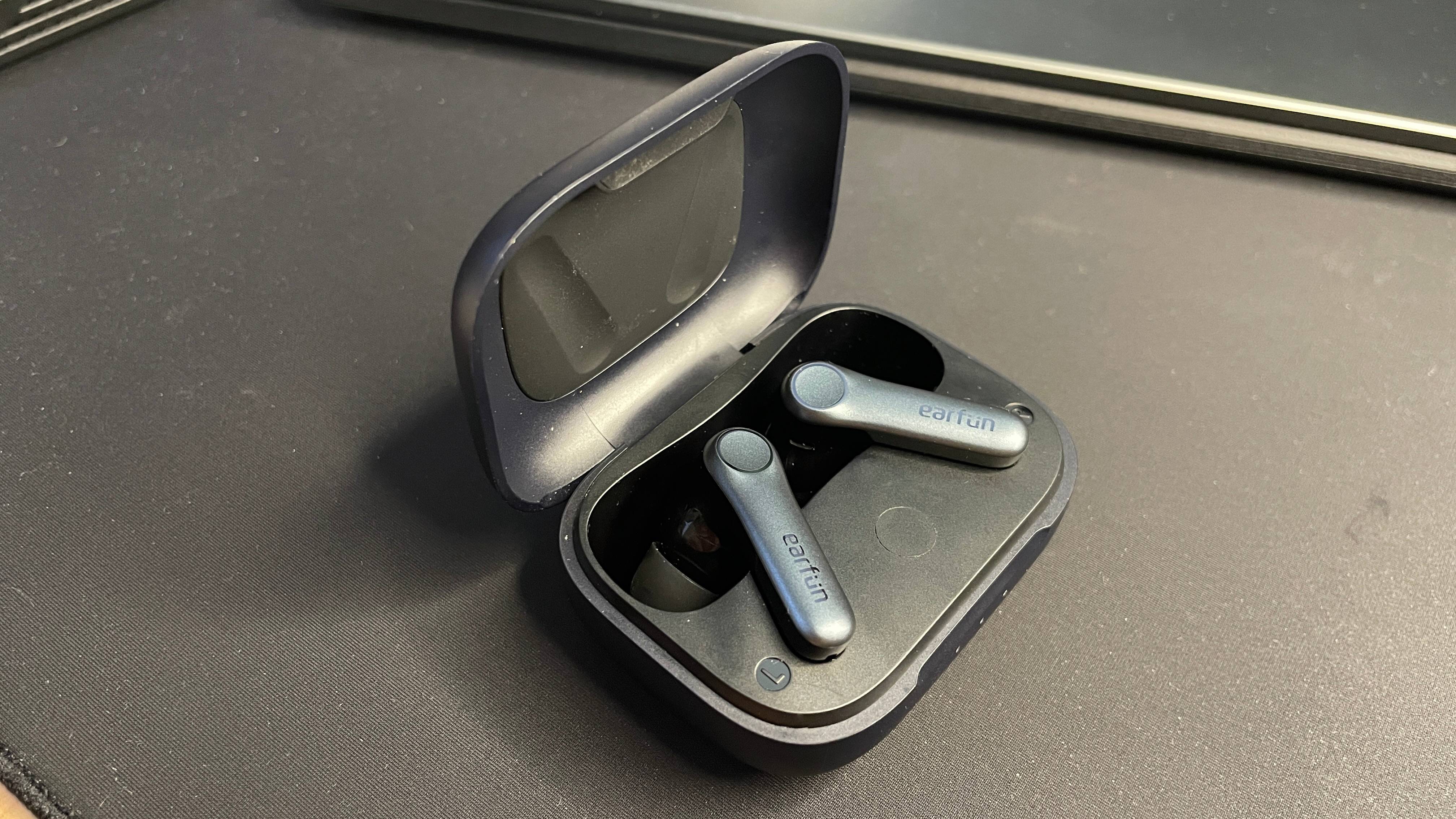
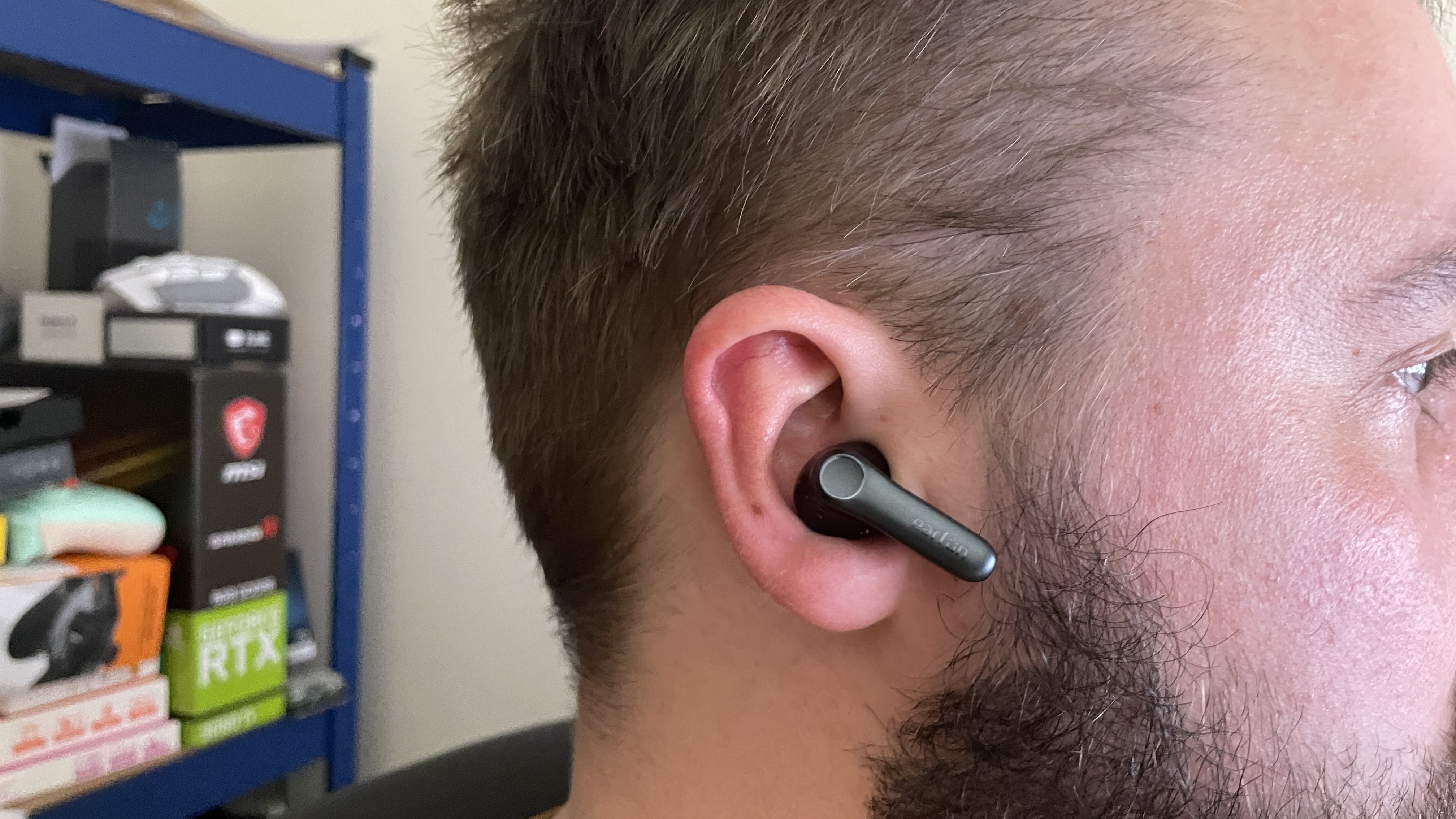
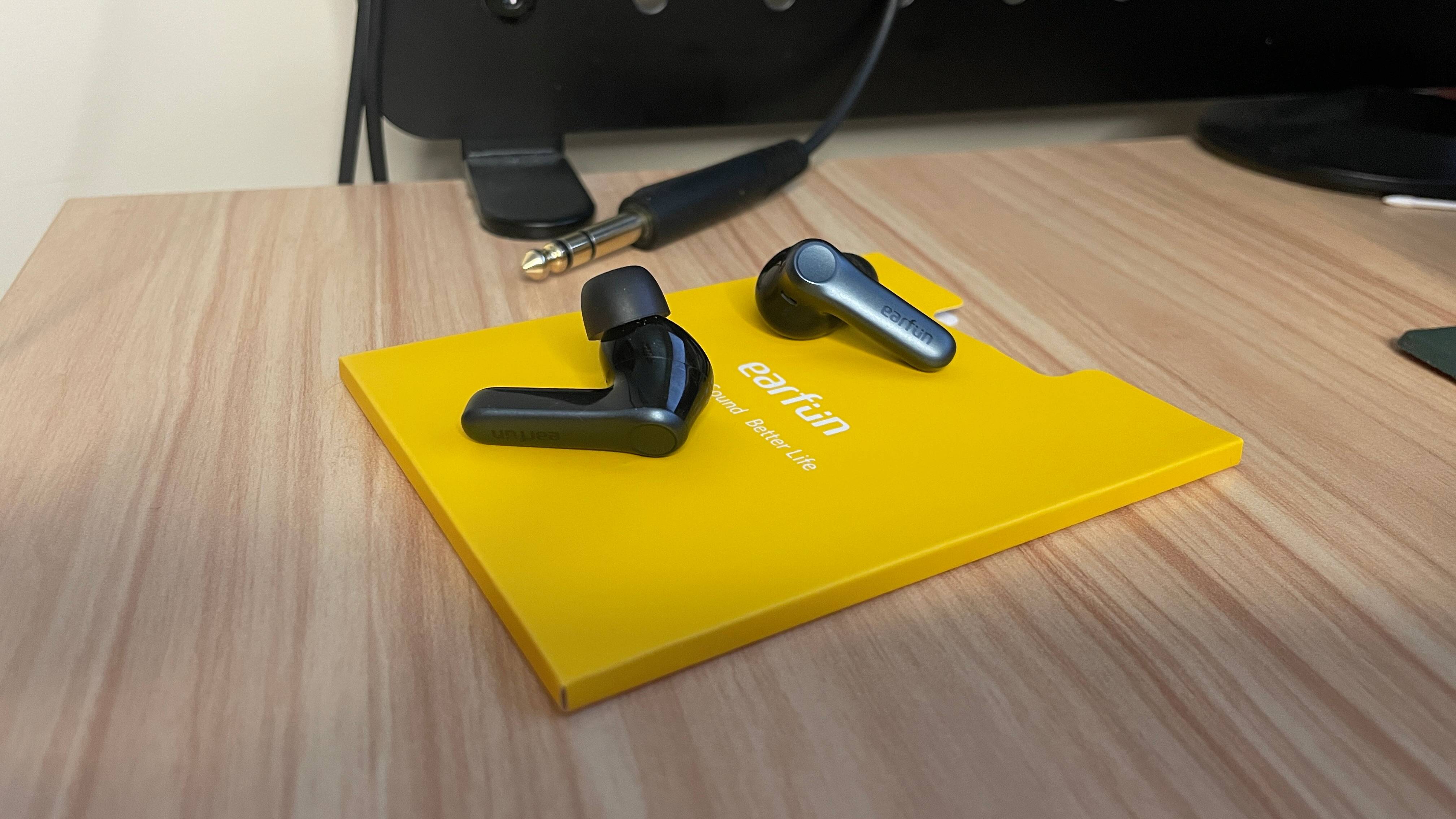
Specifications
Reasons to buy
Reasons to avoid
✅ You want crisp audio for less: The clarity and separation here is great for a very reasonable price when these earbuds are on sale.
❌ You want to use voice comms while gaming: As they're Bluetooth-only, these earbuds don't deal very well with both mic and audio at the same time.
The best midrange wireless gaming earbuds are the EarFun Air Pro 4. At MSRP it's difficult to place these as midrange buds, but they go on sale so often that we might as well consider them to have a second, cheaper price tag. And for that lower price you're getting phenomenal quality.
That's not just because of their audio quality, but also because of the sheer amount of features the Air Pro 4 earbuds offer. From a feature-rich app, to ANC and ambient modes, great battery life, and a case that can be charged via USB-C or wirelessly via Qi charging, there's little more you could want from these EarFun buds.
Apart from 2.4 GHz wireless connectivity, that is, because unfortunately they only support connecting over Bluetooth. But that's a solid Bluetooth connection with zero perceptible latency once Game Mode is enabled, and Dual Device Connection allows you to hook them up to two devices at once—say, a handheld and a phone.
The only real downside to the Bluetooth-only connection is that you can't use the in-built mic and listen to your audio at the same time, at least not unless you're okay with atrocious audio quality. It simply doesn't handle the bandwidth.
But provided you're not blabbering into the mic for a recording or voice call while you're gaming, audio quality is phenomenal for the price. Once you've also done some tinkering in the feature-packed but easy-to-use app, that is. A little boost to some of the lower frequencies and a big boost at the very top has things sounding incredibly crisp.
You're not getting quite the full-bodied presence of very high-end earbuds, but these are around half the price. And at any rate, they do get quite close.
Throw these great 10 mm drivers into two rather stylish earbuds and give them 52 hours of battery life (including case) and a convenient charging case, and you have a wonderful midrange value proposition when they're at one of their frequently discounted prices.
Ultimately, it's not one single thing, but everything taken together that make the EarFun Air Pro 4 the best midrange wireless gaming earbuds. Jack-of-all-trades, master of some.
Read our full EarFun Air Pro 4 review.
Best battery life wireless gaming earbuds

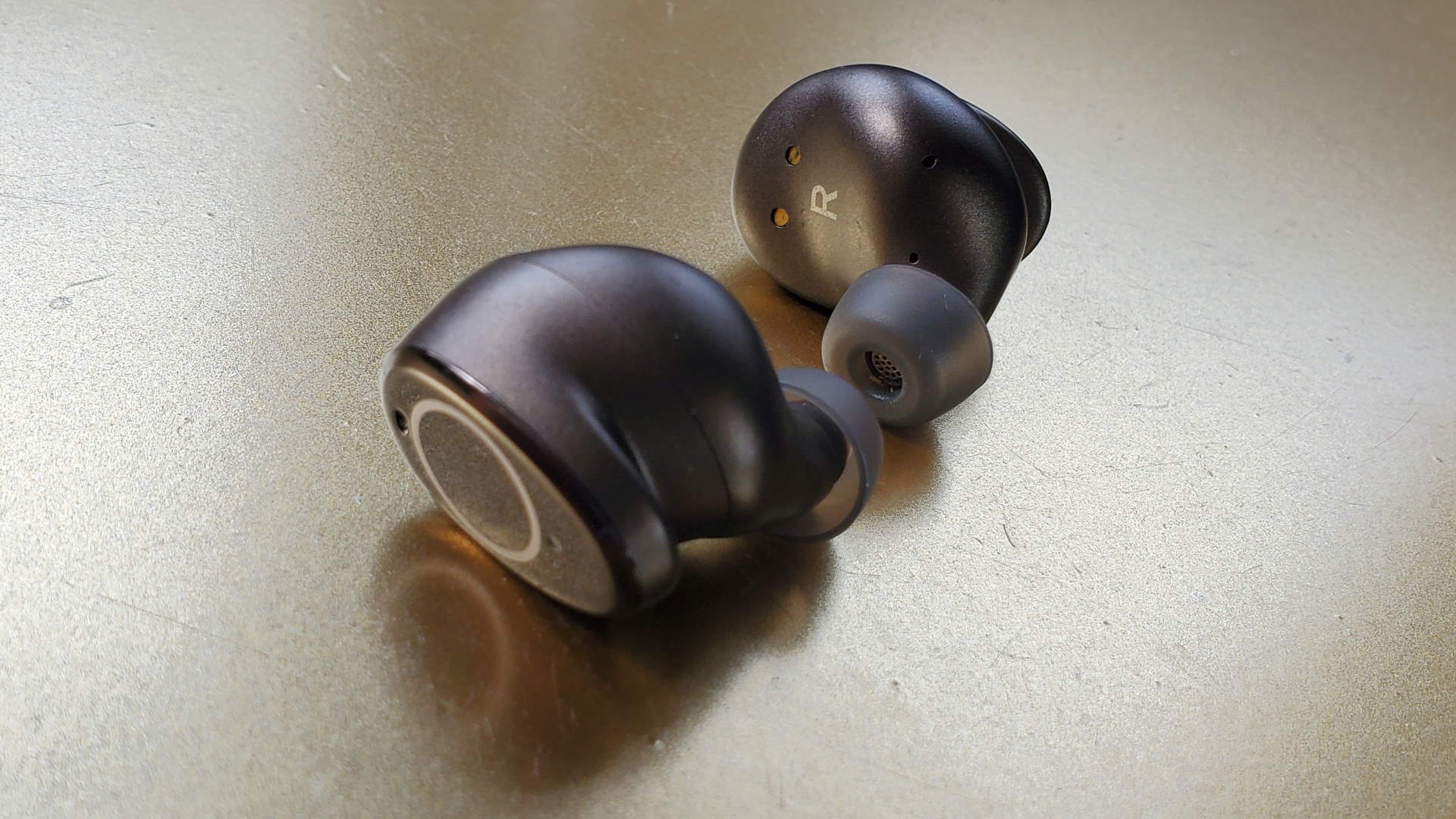

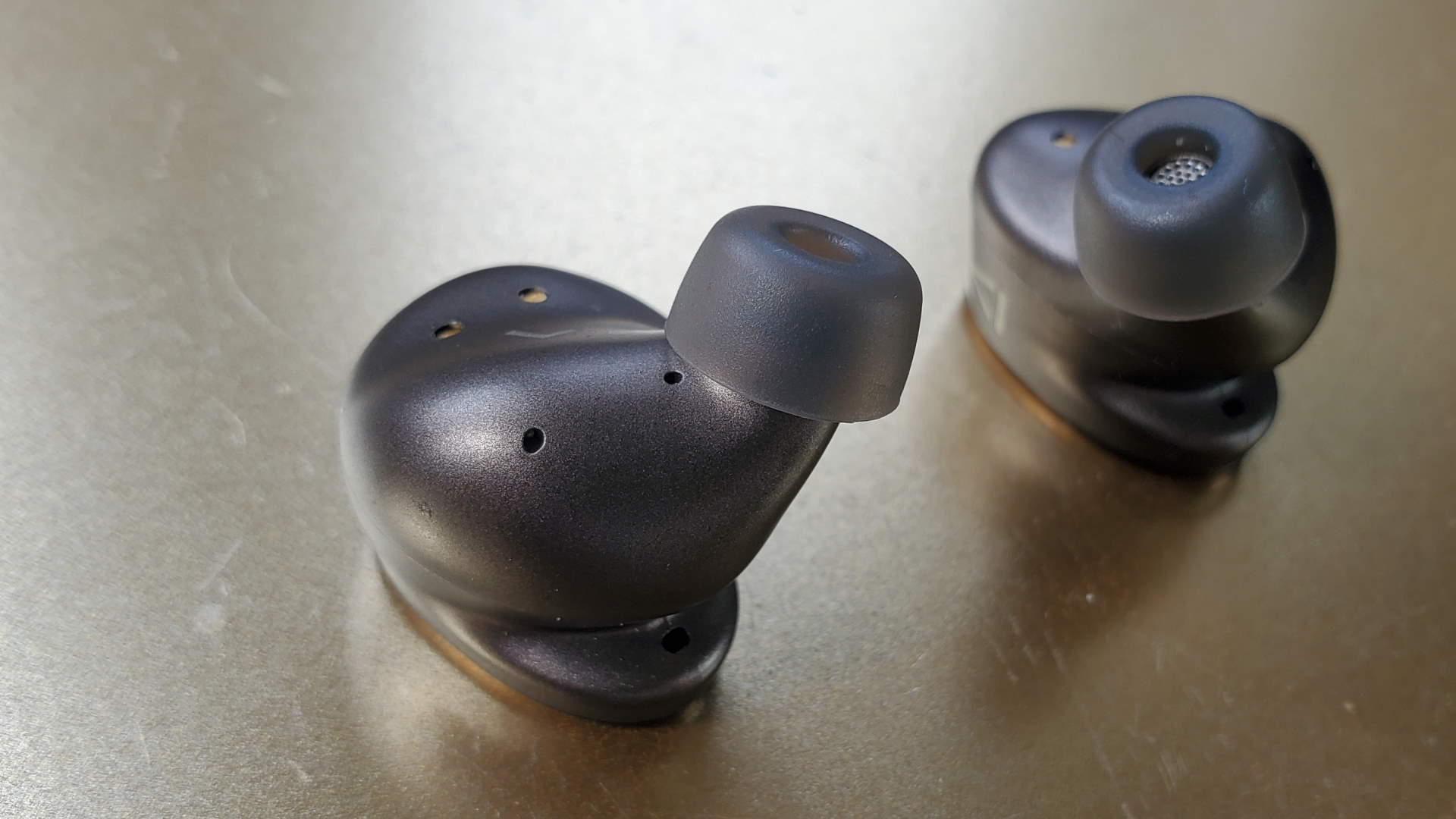
Specifications
Reasons to buy
Reasons to avoid
✅ You travel a lot: Great battery life is a serious boon for any wireless device, especially if you find yourself out in the big wide world on the regular.
❌ You want easy controls: Unfortunately, the Creative Outlier Pro earbuds don't have the best controls, thanks to awkward touch 'buttons' and double-tap rather than single-tap play/pause functionality.
One of the most important factors to consider when deciding upon a pair of wireless earbuds is how long they'll last. The Creative Outlier Pro has this nailed because it's the best pair of wireless gaming earbuds for battery life.
The best of the best on this list, the SteelSeries Arctis GameBuds, have pretty impressive battery life themselves, rated to 10 hours on the earbuds and 40 hours total including the charging case. But this is nothing compared to the Outlier Pros. The latter buds can net up to 15 hours on one charge and up to 60 hours including the charging case. As our Dave pointed out in his review: "the charging case will go on for days".
This is no small thing for wireless buds, especially if you're planning on doing a lot of travelling with them. No need to keep your eye out for charging ports while on the train.
Battery life isn't the only thing these earbuds excel at, either. They sound rather incredible, especially given the sub-$100 mid-range price tag. You're getting detailed audio across the spectrum—even down in the bass frequencies, which pack a pretty solid punch for 10 mm drivers. The ANC is works a charm, too, and you're getting 10 hours of use with it enabled.
The Bluetooth connection is pretty great, too, provided you have low latency mode turned on. This is important for gaming, of course, given you'll want responsive audio feedback from in-game actions and occurrences. Unfortunately you have to enable this mode on your phone before you connect to your handheld or laptop, but once you've done so it works a charm. It won't be as fast as USB 2.4G, of course, but it's close.
There is a downside—isn't there always?—and that's the controls. The touch controls on each earphone aren't the easiest to locate in a pinch, and when you do locate them it's a double-tap for play/pause. Single-tap is usually a no-brainer for this function, so it's strange that Creative opted for double-tap here.
Still, once you get used to those controls, you're commanding a capable pair of little buds. Ones that should keep kicking for quite some time before you have to reach for that charging cable or Qi stand.
Read our full Creative Outlier Pro review.
Best dual-mode wireless gaming earbuds




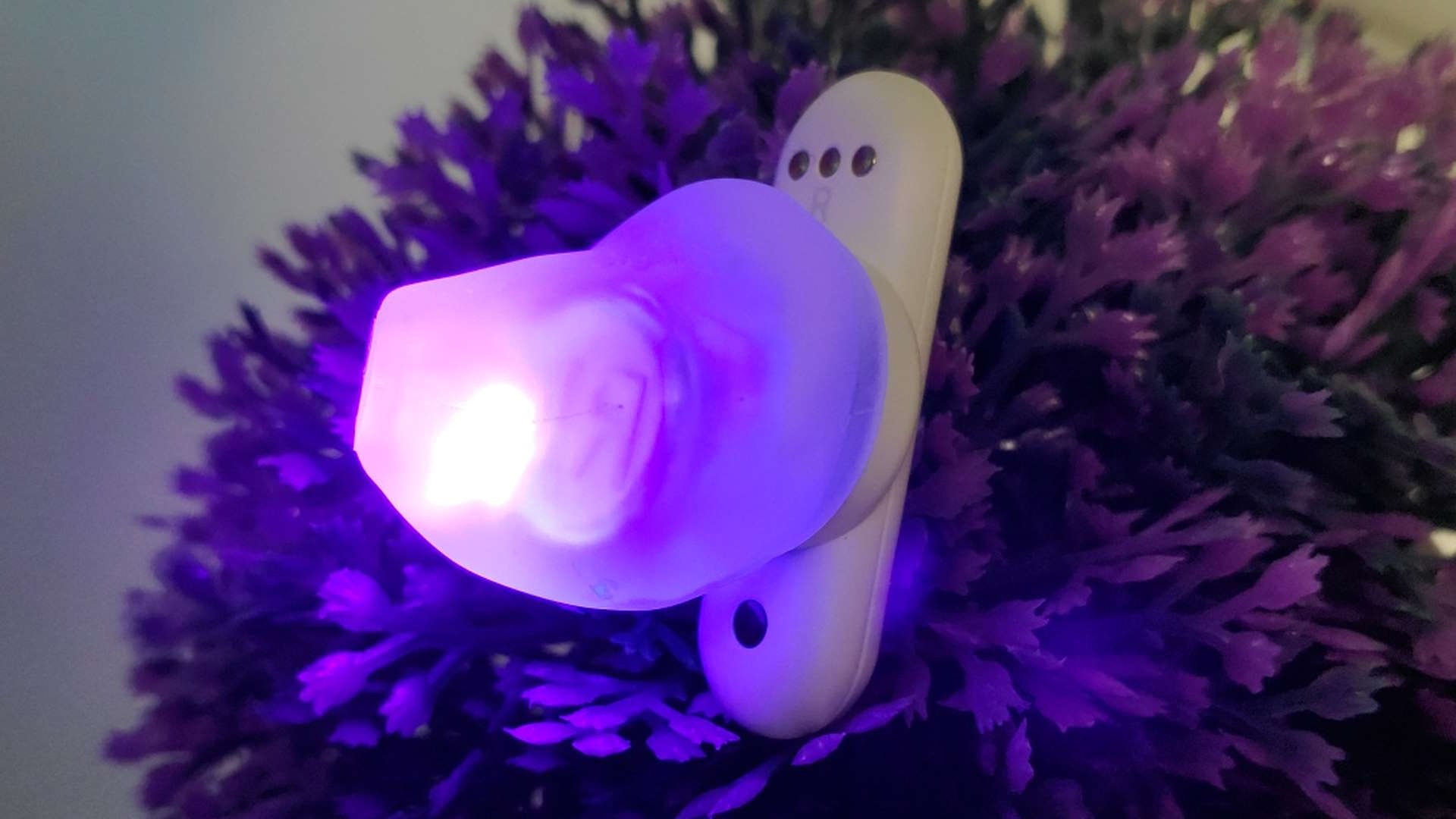
Specifications
Reasons to buy
Reasons to avoid
✅ You want perfectly fitting earbuds: The G FITS use ultraviolet LEDs to harden the polymer tips to the shape of your ears. The result? Day-long comfort and audio isolation.
❌ You prefer oomph to your audio: As with so many earbuds, the standard 10 mm drivers aren't great at reproducing low frequency sounds.
Should you want a set of earbuds that can be used equally as well with your desktop PC and mobile devices, then the best dual-mode wireless gaming earbuds are the Logitech G FITS.
Imagine riding the bus to work, listening to a podcast on your phone. You get to the office, sit at your desk, and after one quick triple-tap of a control, you're now hooked up to your PC. Then, at the end of the day, you repeat the process and you're back to learning about cookie baking as you ignore the hustle and bustle around you.
If that's a familiar story for you, then Logitech's G FITS earbuds may well be your perfect aural companions. Though, you may feel otherwise upon first use.
That's because the G FITS use a set of UV LEDs to harden the polymer cover on the tips, once they're nestled in your ears. It's a somewhat disconcerting feeling at first, but the benefit is that in a short while, they'll feel super comfortable and snug. Best of all, such a perfect fit means you get natural noise cancellation (well, noise blocking), with the need for battery-draining ANC.
The audio quality of the G FITS is good, rather than great, due to the use of fairly standard 10 mm drivers. There's a decent level of tonal clarity across the frequency range, though as with most earbuds, high frequencies are favored over low ones.
There are some other niggles, too, such as the occasional connection hiccup and the fact that the chonky USB Type-A adapter for your desktop PC or laptop doesn't fit in the earbuds carry case. And the price isn't exactly on the bargain side of things.
While they're not perfect, the Logitech G FITS are an ideal solution for anyone looking for a set of earbuds that can be comfortably used all day long and seamlessly switch between devices.
Read our full Logitech G FITS review.
Also tested
Soundcore Liberty 4 Pro
With heaps of customisation options and impressive ANC, we're sold on the Soundcore Liberty 4 Pro as a great set of earbuds for handheld gaming, listening to music, and travelling.
PC Gamer score: 90%
Read our full Soundcore Liberty 4 Pro review.
Audeze Euclid
The fantastic planar magnetic audio cannot make up for the practical shortcomings of the Euclid's as a pair of gaming earbuds. The drivers aren't quite as warm in tone as over-ear PM 'phones, and the painful audiophile pricing—with additional costs for the Bluetooth adapter—make them more show-off buds than a real-world option.
PCGamer score: 74%
Read our full Audeze Euclid review.
Asus ROG Cetra True Wireless
An absolutely fine set of wireless earbuds. The connection is speedy, robust, and comes with decent battery life. Though also comes with rather weak audio quality that makes the whole package end up feeling a bit limp despite the quality feature set.
PCGamer score: 77%
Read our full Asus ROG Cetra True Wireless review.
Gravastar Sirius Pro
Maybe the excessive bass response works for your musical tastes, but the weak battery life, and sacrificing audio in favour of low latency gaming, make us want to swerve the Gravastar buds.
PCGamer score: 57%
Read our full Gravastar Sirius Pro review.
Wireless gaming headset FAQ
How do you test wireless gaming earbuds?
More than a standard wireless gaming headset, you have to test earbuds for a longer time. Comfort and general ergonomics are key to a set of buds that you're likely to use every time you leave the house, whether tethered to your phone for music or podcasts or connected to your gaming laptop or Steam Deck for mobile fun times.
We use a set of buds for an extended period of time, testing with mobile gaming in mind, plugged into the Steam Deck, and using high-resolution audio to get a bead on the overall sound quality.
We'll also test the connection on a variety of devices, and take them around in our day-to-day lives to see what they're like to live with long-term. A good set of earbuds should be capable of being a regular companion during your day, so we make sure to put every set we test through the rigours of our daily schedules, including flights, train journeys, and the odd bit of bedtime YouTube watching.
Latency is also of vital importance when we're talking about wireless earbuds, so being able to turn on game mode if possible, and it being seamless when gaming, is a necessary part of testing, too.
If we're testing Bluetooth only buds, however, we make sure to run them through a gamut of games to see if the latency discrepancy is distracting. Bluetooth-only buds aren't the first choice when it comes to multiplayer gaming, but a good, modern connection is usually fine for a bit of slower-paced single player hijinks.
Can wireless earbuds be used for gaming?
There are certain things to look for when chasing a wireless set of earbuds for gaming. They need to at least have Bluetooth 5.0 to deliver a low latency connection, but it's also worth looking for a dedicated gaming mode, which drives latency down even lower.
This ideally should be enabled via the buds themselves, and not from an app, to make them easily compatible with a gaming laptop or handheld gaming PC such as the Steam Deck.
There are buds with 2.4 GHz wireless dongles, which will cut latency down to an almost invisible level, which is also worth considering.
Are wireless gaming earbuds more expensive?
The sad fact is that you are likely to be paying a premium for a wireless version of any product. You have to factor in the extra design, the extra connectivity peripherals (the wireless dongle, etc.), and the fact you now have to have a battery.
However, there are now many reasonably priced offerings on the market. Sure, they're going to be more expensive than a cheap wired set of buds, but the convenience makes them very much worth it, in our opinion.
Keep up to date with the most important stories and the best deals, as picked by the PC Gamer team.

Dave has been gaming since the days of Zaxxon and Lady Bug on the Colecovision, and code books for the Commodore Vic 20 (Death Race 2000!). He built his first gaming PC at the tender age of 16, and finally finished bug-fixing the Cyrix-based system around a year later. When he dropped it out of the window. He first started writing for Official PlayStation Magazine and Xbox World many decades ago, then moved onto PC Format full-time, then PC Gamer, TechRadar, and T3 among others. Now he's back, writing about the nightmarish graphics card market, CPUs with more cores than sense, gaming laptops hotter than the sun, and SSDs more capacious than a Cybertruck.
- Jacob FoxHardware Writer
